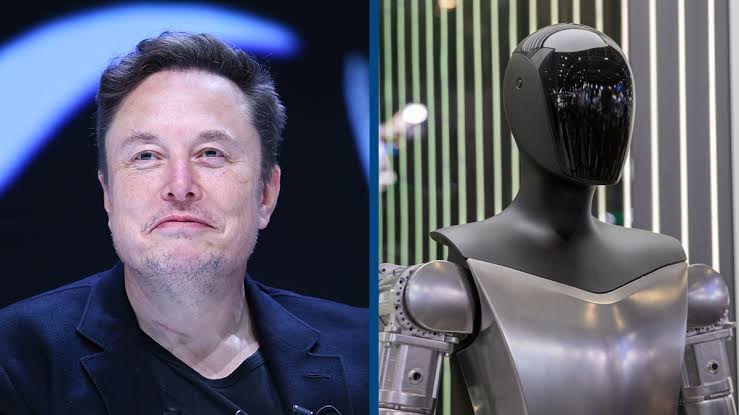
Elon Musk: Tesla’s Optimus Humanoid Helper Robots
The future of robotics is no longer confined to science fiction. As of October 2024, Tesla’s Optimus humanoid robots, led by Elon Musk, are making headlines and setting the stage for a world where intelligent machines assist humans in everyday tasks. Tesla’s entry into the world of robotics with Optimus has sparked discussions about the potential of AI-powered helper robots to reshape industries, daily life, and even the human workforce.
Tesla’s Vision: The Optimus Initiative
Tesla unveiled the ambitious Optimus humanoid robot project during its AI Day event in 2021, if Ted positioning it as a revolutionary step towards creating machines capable of assisting with manual labour. Standing at 5 feet 8 inches, the humanoid robot is designed to perform tasks deemed too repetitive, dangerous, or tedious for humans. With a sleek design and cutting-edge artificial intelligence, Optimus represents Tesla’s vision of a future where robots work alongside humans in manufacturing, logistics, and home care.
Elon Musk envisions Optimus as part of an AI-powered workforce capable of boosting productivity while reducing human exposure to hazardous working conditions. He aims to build a machine that can perform tasks such as assembling parts, carrying heavy objects, and delivering packages, opening the door to widespread automation across multiple sectors. Musk has frequently referred to this as a key step towards an “age of abundance”, where robotics will lead to economic growth and improved living standards.
How Far Has Tesla Come?
By October 2024, Tesla’s Optimus prototypes have demonstrated significant advancements in mobility, coordination, and interaction with human environments. The robots are powered by Tesla’s Full Self-Driving (FSD) software and AI systems, enabling them to easily navigate complex spaces. Equipped with sensors and cameras, Optimus is capable of making real-time decisions and adapting to its surroundings, whether on a factory floor or in a domestic setting.
Tesla has integrated its robots with neural networks, making them highly responsive to verbal commands and pre-programmed instructions. This approach has garnered praise from Gill Pratt, Toyota’s Chief Scientist, who noted that Tesla’s use of neural networks offers the robot the ability to “learn and adapt quickly”, a vital attribute for machines operating in unpredictable environments.
However, experts like Gary Marcus, a cognitive scientist and AI researcher, have expressed caution regarding Tesla’s ambitious timeline. Marcus argues that while Optimus represents an impressive technical achievement, fully autonomous, general-purpose robots may be years away from practical deployment. “We’re still far from robots that can navigate the complexities of human life unaided,” Marcus stated in a 2023 interview with “The Verge”. This viewpoint highlights the need for continued research in AI safety and capability, especially in unstructured environments.
Applications Across Multiple Industries
Tesla’s Optimus robots are already being tested across several industries, demonstrating their potential to revolutionise business operations. In manufacturing, Optimus is set to automate labour-intensive tasks such as part assembly, allowing human workers to focus on more strategic roles. The healthcare industry is also exploring Optimus for non-medical assistance, such as transporting supplies or offering mobility support to patients.
Robotics expert Henrik Christensen, Chair of Computer Science and Engineering at the University of California, San Diego, views Tesla’s Optimus as a significant step forward. In an interview with “IEEE Spectrum”, Christensen observed that “Tesla’s ambition is to set a new standard for humanoid robots in industry”. He highlighted that while industrial robots have been around for decades, Tesla’s efforts to make them mobile and adaptive are groundbreaking.
In logistics, companies are testing Optimus to automate warehouse tasks such as sorting, picking, and packing items for shipment. The agricultural sector is also evaluating the robot for use in planting, harvesting, and crop monitoring, potentially reducing the need for human labour. In the home, Optimus could one day assist with cleaning, cooking and providing companionship to elderly or disabled individuals.
Ethical and Economic Considerations
The rise of Tesla’s humanoid robots has sparked ethical and economic debates. While proponents argue that Optimus could increase productivity and improve safety in hazardous jobs, critics are concerned about potential job displacement and the broader implications of AI in the workforce. The World Economic Forum has reported that automation could lead to the elimination of certain jobs, particularly in low-skill sectors. However, some experts contend that automation will also create new roles, particularly in AI development, robotics maintenance, and high-skill oversight.
The types of jobs most at risk from Tesla’s Optimus robots include those involving repetitive, manual labour, particularly in industries such as manufacturing, logistics, and retail. Tasks like warehouse sorting, assembly line work, and basic operational roles could be fully automated, leading to significant reductions in low-skill positions. A 2024 report from the McKinsey Global Institute found that nearly 45% of activities for which workers are currently paid could be automated with existing technology, especially in sectors requiring physical work in structured environments.
However, automation will also create new roles, particularly in AI programming, robotics engineering, and machine learning, as these areas require specialised expertise to design, manage, and troubleshoot complex AI systems. Additionally, there will be growth in roles related to AI ethics, data privacy, and compliance, as the need to regulate and ethically manage AI-driven systems becomes increasingly critical. For example, Gartner projects a 35% increase in AI-related jobs, including data analytics and AI governance, by 2025, as organisations look to harness the power of AI while ensuring responsible implementation.
David Autor, a leading MIT economist specialising in the impact of automation on labour markets, has spoken about these concerns. Autor argues that although robots like Optimus could displace jobs, they may also transform the nature of work. “Historically, automation doesn’t just eliminate jobs; it reshapes them,” Autor stated during a 2024 conference on the future of work. He believes that, in the long term, robots will handle repetitive tasks, allowing human workers to engage in more complex and creative roles.
Another key concern is the ethical management of AI, particularly in terms of data privacy and security. Optimus is equipped with cameras and sensors that continuously collect data, raising questions about who controls this information and how it is used. AI ethicist Kate Crawford, co-author of *Atlas of AI*, has emphasised the importance of transparency in managing AI data. “When you integrate robots into private spaces, there is a huge responsibility to safeguard privacy and prevent misuse of data,” Crawford said at a 2024 panel on AI ethics.
Looking Forward: What’s Next for Optimus?
Tesla continues to refine its Optimus robots, with mass production on the horizon. Elon Musk has hinted that Tesla aims to make Optimus affordable for the average consumer within the next few years, much like the company’s electric vehicles. This could make Optimus a household name, offering people unprecedented convenience and assistance.
However, widespread deployment is still some time away. While the prototypes show promise, Tesla must overcome several technical and regulatory hurdles before Optimus becomes a common feature in homes and workplaces. In addition, governments and regulators will need to develop new frameworks to ensure the ethical and safe integration of humanoid robots into society.
Conclusion
Tesla’s Optimus humanoid robots represent a bold step into the future, driven by Elon Musk’s vision of a world transformed by AI and automation. From factory floors to homes, these robots have the potential to reshape the way we live and work. However, like all technological advancements, Optimus brings with it challenges, from job displacement to data security concerns. The next decade will be crucial in determining whether Optimus becomes a ubiquitous part of modern life or remains a technological curiosity. October 2024 marks an important milestone in Tesla’s journey towards human-robot collaboration.
Aric Jabari is a Fellow, and the Editorial Director at the Sixteenth Council.



